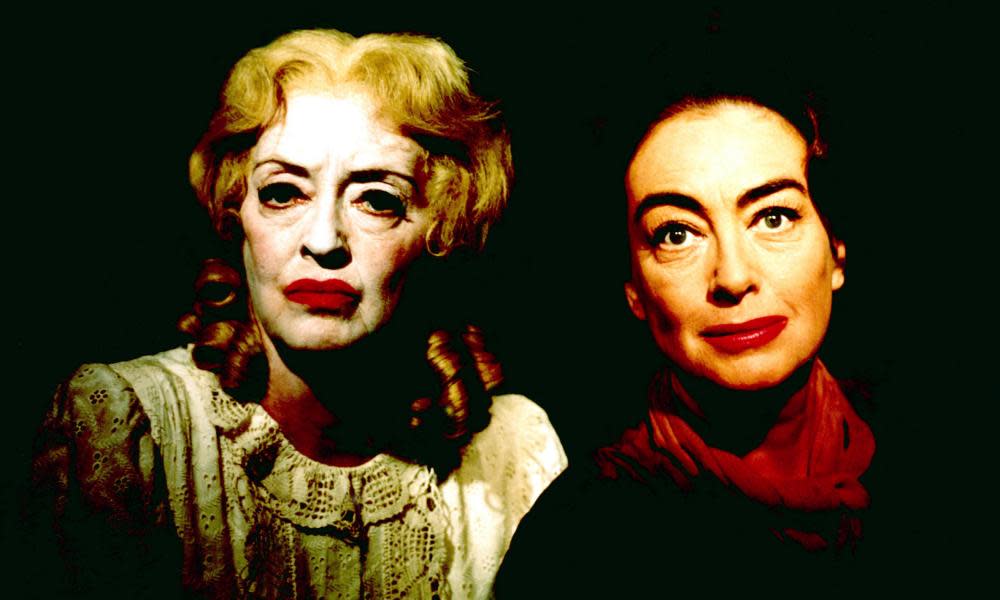What Ever Happened to Baby Jane?: still brilliantly shocking at 60

Featuring one of cinema’s most famous villains and two grande dames of Hollywood – Bette Davis and Joan Crawford – going toe to toe, this 1962 film packs a punch
What Ever Happened to Baby Jane is streaming on Apple TV and Amazon Prime Video. For more recommendations of what to stream in Australia, click here
Get our weekend culture and lifestyle email and listen to our podcast
You’ve no doubt seen plenty of movie villains before – nasty pasties determined to destroy the world, or defeat the hero, or ask employees to work on the weekend. But you’ve never seen a hellraiser quite like Bette Davis in What Ever Happened to Baby Jane?, a film that stormed in cinemas 60 years ago and, by God, still packs a punch. The greatest feature of Davis’ wall-rattling performance is that it’s so strong, so toxically and overpoweringly good, it seems to swell and morph the very fabric of the production around her, lifting the whole film into a heightened state of melodrama.
Director Robert Aldrich’s 1962 classic, which was based on a novel by Henry Farrell published two years earlier, begins in 1917, with the name of Davis’ titular character – Baby Jane Hudson – emblazoned on a theatre marquee. Inside, Baby Jane (a child prodigy) sings and dances in front of an adoring audience. As they watch on from the wings, her mother tells Baby Jane’s older sister Blanche that “some day it’s going to be you that’s getting all the attention. And when that happens, I want you to try to be kinder to Jane and your father than they are to you now.”
The story jumps ahead to 1935 and mother’s prophecy has come to pass. Baby Jane’s performance style has fallen out of vogue and Blanche (Joan Crawford) is now “the biggest thing in movies today”, as one bigwig on the studio lot puts it. But that too changes (all this transpires very early in the running time) when Blanche is paralysed in a car accident. It is unclear exactly what happened, triggering a question that hangs over the entire film – did Jane hurt her sister on purpose? – which is only directly answered at the very end.
Another jump forward moves the drama into a large shadowy house, where the two sisters, now middle-aged, live. Davis as Jane is Norma Desmond stretched into grotesquery: unable to accept her lack of fame, she is a bitter and twisted alcoholic and the carer from hell for the kind and vulnerable Blanche. When Baby Jane performs one of her old songs in front of a mirror, singing “I’ve written a letter to daddy”, her voice lilted in a screech of desperation, it’s sad and pathetic. But you can’t feel sorry for her – she’s far too wicked to solicit empathy.
Baby Jane learns that Blanche intends to sell their home and is worried that her sister will have her committed. What follows blends family (melo)drama, a Misery-esque domestic thriller and suburban horror. Jane’s cruelty scales up to an excruciating fever pitch while Blanche desperately attempts to solicit help from the outside world. For a while, their housekeeper Elvira (Maidie Norman) appears to be Blanche’s only hope – but this is not a film with any heroes.
It sure as hell has a villain, though: Baby Jane made the American Film Institute’s list of the 100 greatest baddies, at No. 44. This is a little low for my liking, but assessing this conga line of nasty pasties is (to mix food-related metaphors) a matter of apples and oranges.
How do you compare Davis’ performance, for instance, to a more fantastic portrayal of evil such as Margaret Hamilton’s cackling Wicked Witch in The Wizard of Oz? The latter has irresistible cartoon menace, but Baby Jane is in the home, the kitchen, the bedroom. She emotionally abuses her sister while also swinging a literal hammer and galavanting around like a monster from a William Castle movie. Who could forget the moment when poor Blanche takes the tray off her dinner, only to discover Baby Jane has placed a dead canary on top of it?
What Ever Happened to Baby Jane? arrived roughly halfway through Davis’ prolific career and is one of her best-known roles. There was always a darkness in her beauty, a mix of sass and sinister that simmered and sometimes very memorably spilled over; like in her 1940 film The Letter, when she shrieks, “I still love the man I killed!”, or the 1950 classic All About Eve, when her titular character – another boozy schemer – warns party guests to “fasten your seatbelts, it’s going to be a bumpy night.”
In Aldrich’s film nothing is subtle, and nothing about Davis simmers. She cranks the dial to eleven, then snaps off the handle and feeds it to you for dinner – on a bed of your worst fears.

 Yahoo Movies
Yahoo Movies 
